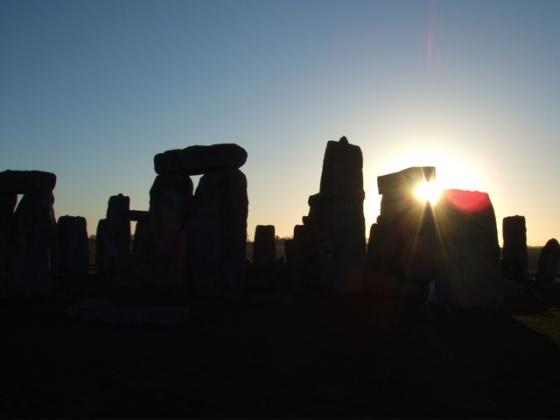In 1720, Stukeley wrote: “On Salisbury Plain near Stonehenge in the sheep-penning there several barrows called the Kings Graves. The stones which once stood there are lately carried away.”
The existence of these stones is apparently corroborated by the detailed drawing of Stonehenge and its surroundings made by J Hassell (for Inigo Jones’ ‘Stonehenge’): he drew stones on the side of the hill above ‘Penning Bottom’.
It’s likely the stones went for road making. And speaking of which, here’s a peculiar tale told by “the late Mr Soul, grocer and baker of Amesbury”:
The Marquess of Queensbury set out to make a road to Shrewton, the remains of which can be seen today. It left the Amesbury road just after the Seven Barrows, crossed the valley, went over the Stonehenge Avenue, and nearly got to the Cursus. But one day the Marquess rode up to see how the work was getting on and then went on to Shrewton. It was Trinity Monday, the Shrewton fete day, and he found them all so drunk that he decided Shrewton was no fit place to be connected with Amesbury.
Now what’s all that about? Various Marquesses certainly made their mark on the land round here*. Perhaps it’s based on a truth. But doesn’t the story smack slightly of the town rivalry / devil folklore you get elsewhere? Perhaps my imagination.
In ‘Notes’ on the Seven Barrows, WAM 61 (1966)
* eg see the history mentioned in the 2002 ‘Stonehenge World Heritage Site – Archaeological Research Framework’ at
apollo5.bournemouth.ac.uk/stonehenge/pdf/section2.pdf




















































































































